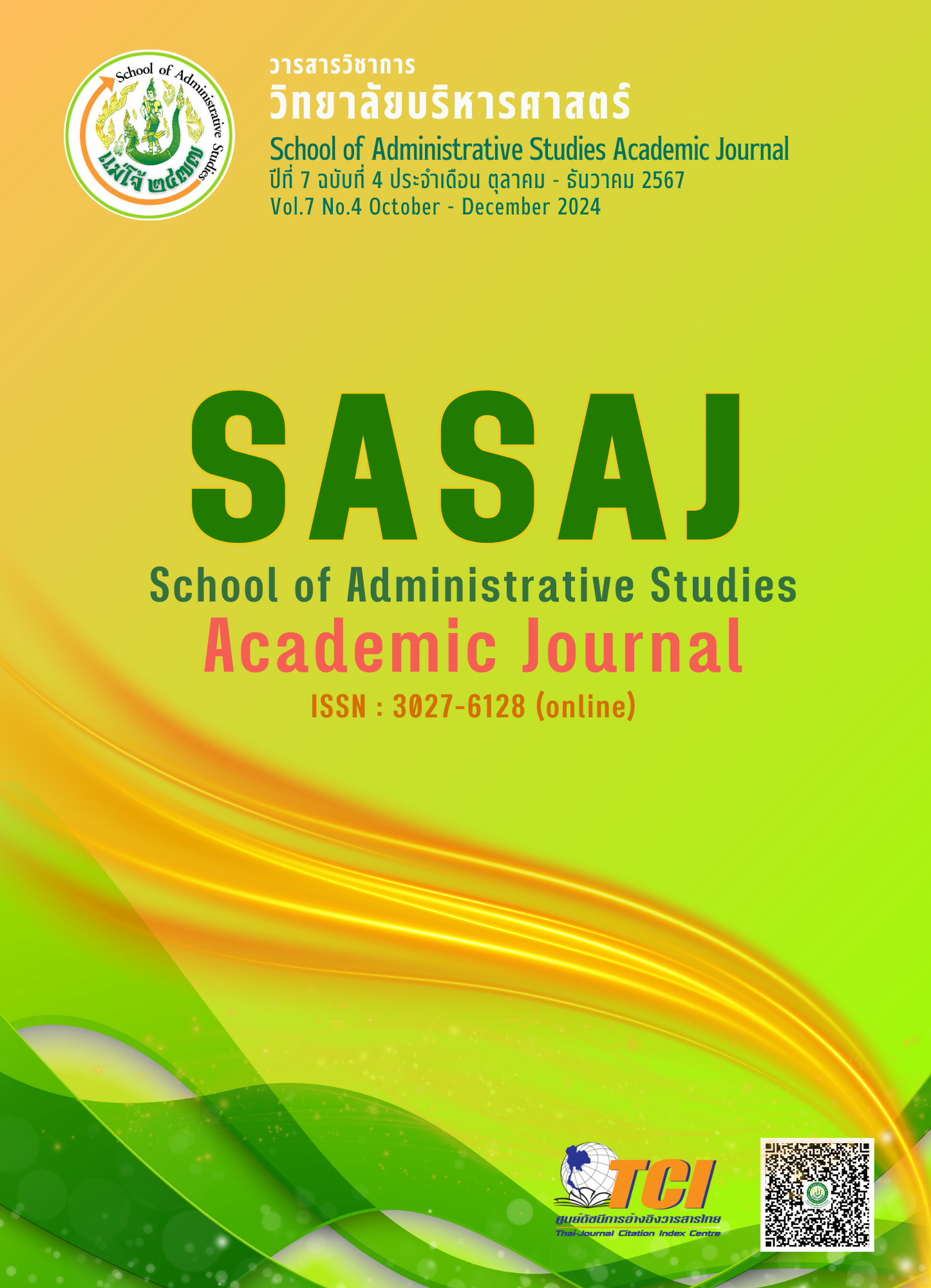Development Approach Toward Sport Tourism City: A Case of Buriram Model
Main Article Content
Abstract
The objective of this paper are to study the development approach toward sport tourism by utilizing the Buriram model, the advantages and consequences in enhancing development the province, and key success factors of accomplishment, and an expansion of the Buriram model in other areas. Based on qualitative method, an in-depth interview was conducted covens they stakeholder them public, private, civil society sectors, and academician with a total of 20 informants.
The results of the study found that development approach toward the evolution of bringing about sport tourism by utilizing the Buriram model can be divided into 3 periods, starting with 1) initiating change, 2) changing and pushing forward for cooperation, and 3) an international accomplishment. Advantages and consequences arise from the Buriram model in enhancing development of the province, inducing political, tourism, economic, social and cultural dimensions. Key success factors among other are collaboration among all concerned parties outstanding activities and events, safe facilities and utilities, and generating landmarks and connecting tourist attractions within the province.
Article Details

This work is licensed under a Creative Commons Attribution-NonCommercial-NoDerivatives 4.0 International License.
ลิขสิทธิ์
References
กระทรวงการท่องเที่ยวและกีฬา. (2559). รายงานภาวะเศรษฐกิจท่องเที่ยว: กายภาพการท่องเที่ยวเชิงกีฬาของไทย. สืบค้นจาก https://www.mots.go.th/more_news_new.php?cid=581
กระทรวงการท่องเที่ยวและกีฬา. (2560). แผนพัฒนาการกีฬาแห่งชาติ ฉบับที่ 6 (พ.ศ. 2560 - 2564). กรุงเทพฯ: กระทรวงการท่องเที่ยวและกีฬา.
กระทรวงการท่องเที่ยวและกีฬา สำนักงานปลัดกระทรวงการท่องเที่ยวและกีฬา. (2562). โครงการจัดทำแผนพัฒนาเศรษฐกิจกีฬาของประเทศไทย ฉบับที่ 1 (พ.ศ. 2562- 2564). กรุงเทพฯ: กระทรวงการท่องเที่ยวและกีฬา.
กระทรวงการท่องเที่ยวและกีฬา สำนักงานปลัดกระทรวงการท่องเที่ยวและกีฬา. (2564). รายงานภาวะเศรษฐกิจท่องเที่ยว ฉบับที่ 6 (ตุลาคม-ธันวาคม). สืบค้นจาก https://www.mots.go.th/download/article/article_20170105115652.pdf
ภคนันท์ วระพินิจ, และ กอบกูล จันทรโคลิกา. (2663). รูปแบบการท่องเที่ยวเชิงกีฬาในประเทศไทย. วารสารวิชาการเซาธ์อีสห์บางกอก (สาขามนุษย์ศาสตร์และสังคมศาสตร์), 6(2), 32-44.
สำนักงานจังหวัดบุรีรัมย์. (2560). แผนพัฒนาจังหวัด 4 ปี (พ.ศ. 2557- 2560). สืบค้นจาก http://www.buriram.go.th/web3/index.php/province-development/plan-development
สุวิญชา รักหาญ, กนกกานต์ แก้วนุช, และ เทิดชาย ช่วยบำรุง. (2566). การพัฒนาเกณฑ์การประเมินการจัดการการท่องเที่ยวโดยชุมชนสู่ความยั่งยืน. วารสารสังคมศาสตร์และวัฒนธรรม, 7(3), 64-81.
อัมรินทร์ สุขเกษม. (2561). การพัฒนาแนวทางการจัดการการท่องเที่ยวเชิงกีฬาของสโมสรฟุตบอลอาชีพ (วิทยานิพนธ์ปริญญามหาบัณฑิต). มหาวิทยาลัยพะเยา, พะเยา.
Bull, C. J., & Weed, M. E. (1999). Niche markets and Small Island Tourism: The Development of Sports Tourism in Malta. Managing Leisure, 4(3), 142-155.
Hall, C. M. (1992). Hallmark Tourist Events: Impacts, Management and Planning. London: Belhaven Press.
Maier, J., & Weber, W. (1993). Sport tourism in local and regional planning. Tourism Recreation Research, 18(2), 33-43.
Pestoff, V. (2010). New Public Governance, Co-production & Third Sector Social Services. Sweden: Institute of Civil Society Studies, Ersta Skondal University Collage.


